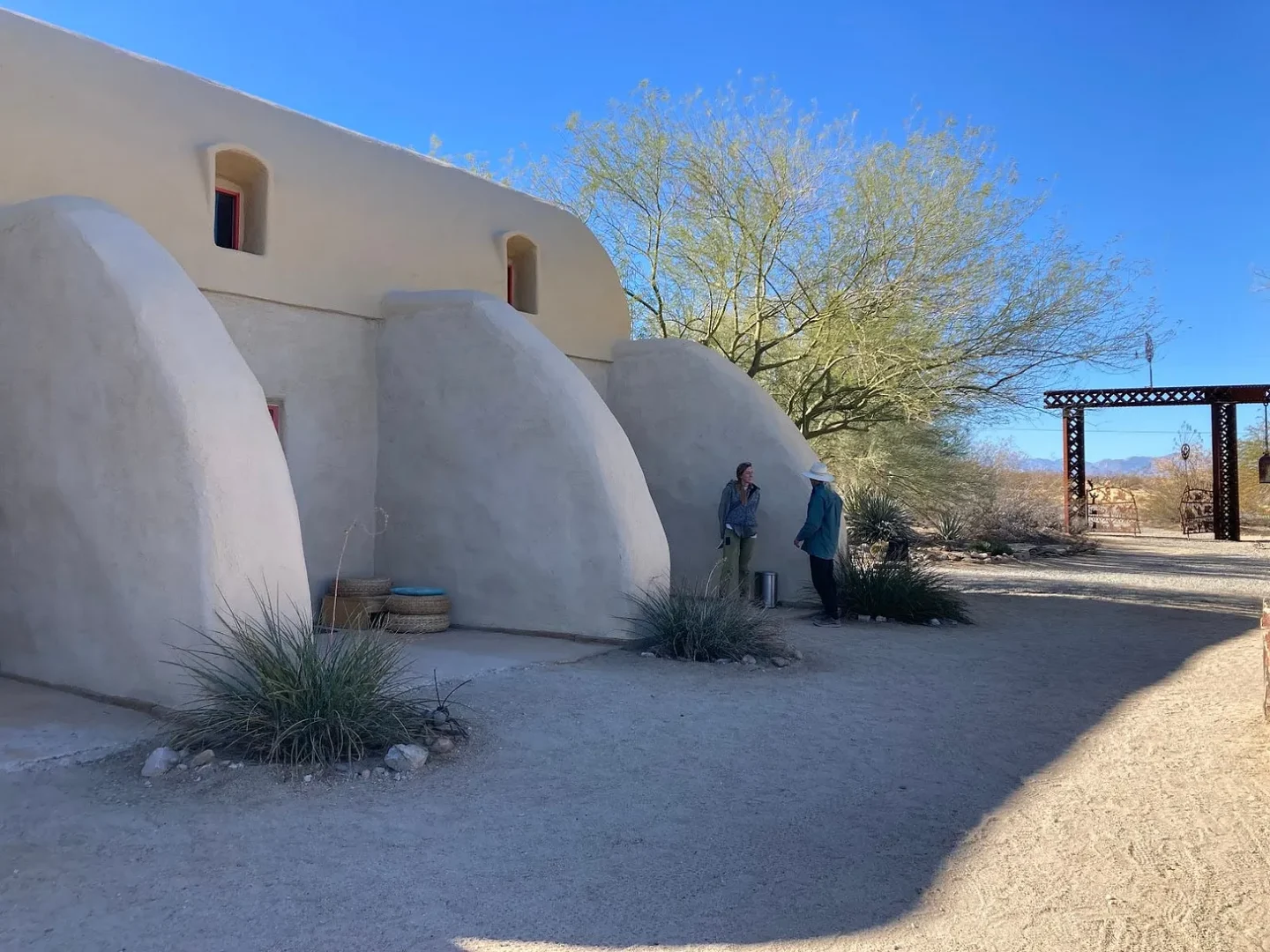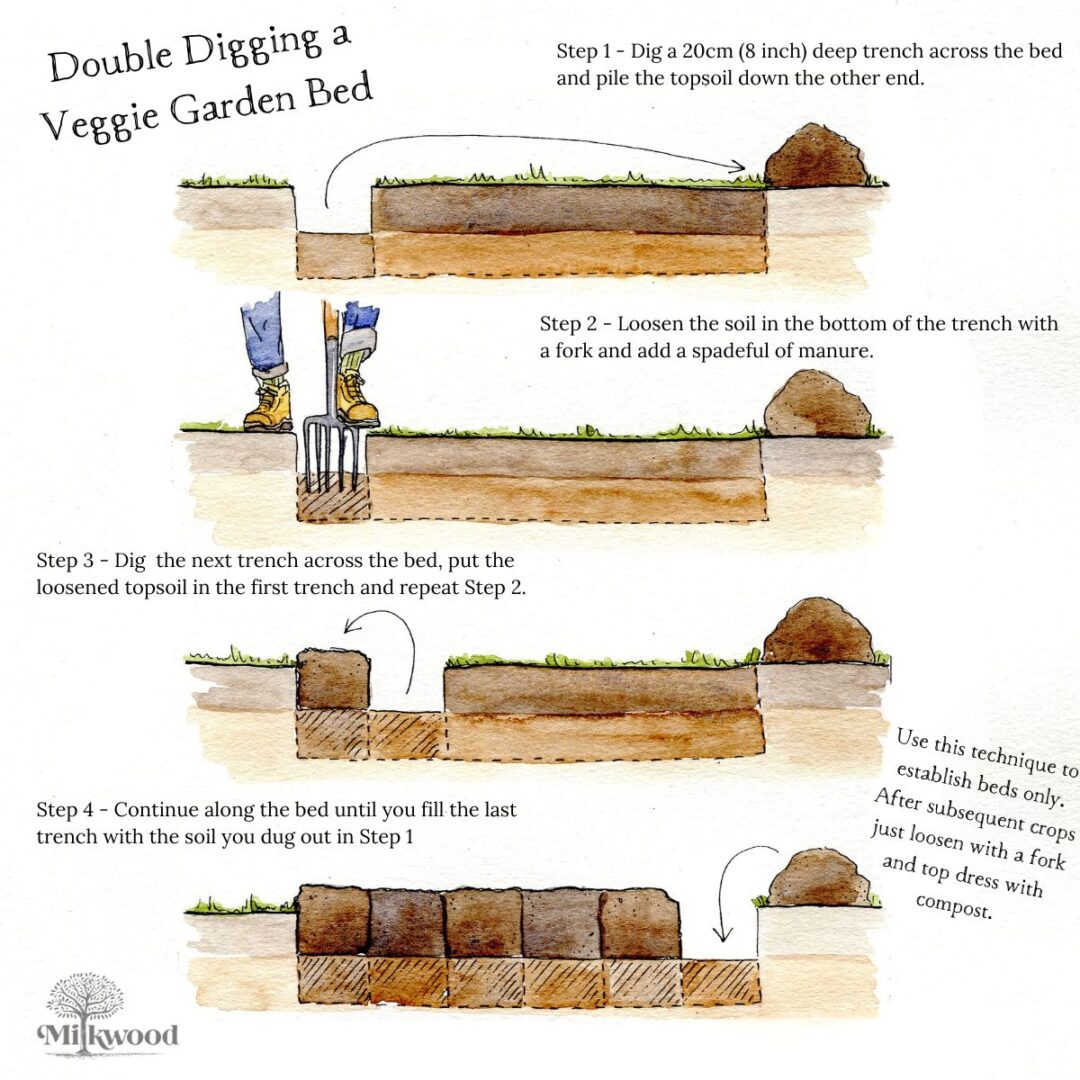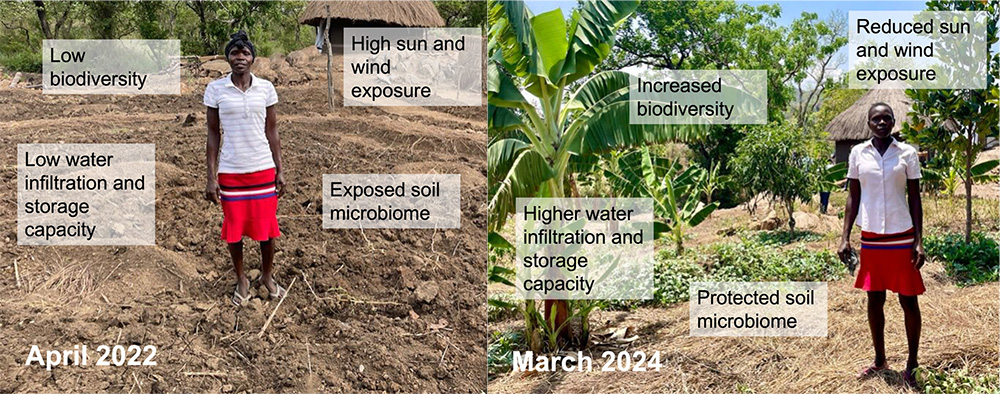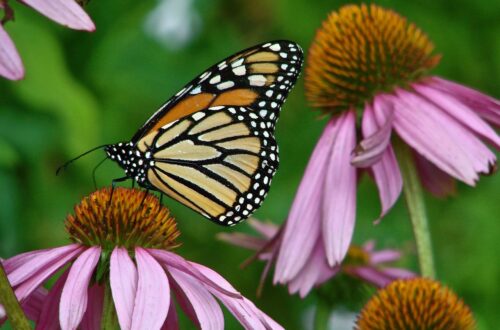
What Is Permaculture? Joshua Tree Course Provides Overview and Community
By Holly Shaftel, EarthRise LLC
Earth’s problems are increasingly complex, but the solutions can be incredibly simple.
That’s according to Warren Brush, a global resilience design consultant, educator, lecturer, and storyteller who helped lead an “Intro to Permaculture” weekend workshop at the Joshua Tree Foundation for Arts and Ecology in Joshua Tree, Calif., on Dec. 6–8, 2024. The event provides a taste of a two-week permaculture design certification course in the same location.
According to Brush, permaculture (a word combining “permanent” and “culture” or “agriculture”) is “a design science for regenerative human settlement that harmonizes with natural patterns to create more life.”
Put another way, permaculture helps humans work with nature, instead of against it, to cycle waste (i.e., convert discarded materials into new products), grow food, build homes, and create communities.
When relying on Mother Nature’s wisdom to fix the world’s most pressing environmental ills, from land degradation to climate change, whether in California or in a Uganda refugee camp, what possibilities can arise?
After attending the class with some 20 other curious cats, I can summarize the overall experience and what we learned, briefly describe how permaculture can help solve climate change, and add some closing thoughts.
Setting the Stage
On the evening of the 6th, people of various backgrounds, including some “cultural creatives,” sat down in a straw-bale building called the Lou Harrison House to learn how to better connect with the planet in this crazy, mixed-up world.
“I like to start my presentations with gratitude,” Brush said. “I’m grateful for the soils of the earth.”
His powerful opening and narratives took us on his journeys to Africa, where he worked with the United Nations and many other global organizations to transform seemingly sterile lands into life-sustaining oases.
The talk set the tone for the following two days, which started across the street with a phenomenal breakfast filled with vegan options and food harvested on site (and this site has a compost toilet that I used many times).
“We’re a demonstration site,” the foundation’s director, Eva Soltes, said. “We are ourselves learning, but trying to share the knowledge, share the seeds of what can grow and sustain us in the desert. Because with climate change, [there are] more and more deserts.”

Saturday detailed a prophecy from the world’s oldest-known book — The Epic of Gilgamesh — revealing that deforestation would lead to the end of humanity. But Brush offered hope: Land restoration through the power of permaculture could help us save ourselves.
He continued his lecture by addressing the core ethics of this practice: Care for the Earth, Care for People, and Care for the Future.
Then followed permaculture principles, peppered with fun facts that included the origin of carrots.
Why? Because one needs to understand the local climate, among other variables, to know what kind of food and native plants to grow. (Spoiler: Carrots came from the highlands of Afghanistan.)
Then Brush bestowed upon us permaculture design methods, which refreshingly force us to slow down and start small and simple. The Western world’s “grind culture” — and its propensity to push against natural patterns — might not let the odds ever be in our favor when planning sustainable living systems.
Following this enlightening information, the group enjoyed lunch, a site tour to see permaculture principles in action, and a “hot compost heap” practicum to learn how to give your garden a diverse diet. (Guess what we named this pile: “Hot Mess”!)
At this point, it doesn’t take a rocket scientist to understand that strong soil health is an antidote to the aforementioned augury. (Remember Gilgamesh?)
Community continued to build during dinner and strengthened on Sunday.

Sunday, Science, and Climate Solutions
The final day’s activities showed us that life regeneration isn’t limited to rural landscapes; when seen as an ecosystem, cities can benefit too.
We dove into urban homesteading, kitchen gardens, and garden beds, learning what’s possible in a space as small as a front porch to as large as a community plot. In other words, you can grow more variety with less space.
“Don’t just think outside the box; think as if there’s no box,” Brush said.
For that day’s practicum, we grabbed our gloves and shovels to make a biointensive double-dug garden bed, a method for growing vegetables that can be applied to urban settings. (To create a highly nutrient-rich soil, a biointensive bed has many layered natural ingredients, from chicken manure to fallen leaves.)

When taken together, the science of permaculture becomes clear: It’s holistic, mimics nature, and connects living beings to their environment. It’s grounded in ecology, soil science, water management, plant and animal relationships, energy efficiency, climate resilience, and social systems.
In permaculture, you “never stop sowing” — that is, you plant in succession instead of all at once — and life on the edge (that is, the boundary line between two ecosystems, such as between a forest and a field) is often more biodiverse than the interior of complementary systems.
Moreover, by harmonizing with nature, reducing waste, and promoting long-term sustainability, the life-regenerating hallmarks of permaculture can help humans address various aspects of the climate crisis. Here are some examples:
- Carbon sequestration: Healthy soils draw in carbon from the atmosphere. Permaculture practices such as conservation tillage, cover cropping, crop rotation, and composting can add a significant amount of carbon to the soil. Adding trees to the mix increases carbon storage.
- Energy efficiency: Homes, other structures, and communities can be designed to work with the sun’s path and to include alternative energy sources such as solar, wind, hydropower, and biogas to reduce the need for fossil fuels.
- Water conservation: Global heating is bringing extreme weather events such as droughts and floods. Permaculture principles such as rainwater harvesting and water-efficient landscaping can help strengthen climate resilience efforts.
- Biodiversity: An ecosystem of diverse plant and animal species can better withstand climate crisis-related disruptions such as pests, diseases, and extreme weather.
- Regenerative food systems: Our current agricultural system can cause deforestation, soil degradation, and synthetic fertilizer and pesticide use, among other climate-related issues. Permaculture offers a solution by creating sustainable, local, and regenerative foodsystems that are less resource-intensive and work with nature.
- Waste reduction: By employing “closed-loop recycling” — that is, by using less, recycling, and reusing waste such as through composting, building with reclaimed wood, and constructing greywater systems (using wastewater from baths, sinks, etc.), we can divert materials from methane-producing landfills and waste incineration.
- Climate change adaptation: In addition to mitigating (reducing) climate change, permaculture can help communities adapt to the crisis by creating more resilient, nature-mimicking systems, such as microclimates with trees or empowering people to take control of their food, water, and energy.
- Educational and cultural shifts: Permaculture encourages a fundamental rewiring in how people think about the environment, consumption, and their relationship with the land and each other. By educating individuals and communities on regenerative practices, permaculture fosters greater environmental awareness and empowers people to take action.

Closing Thoughts
On Sunday evening, the group gathered in a circle to share what they were taking away from the class.
“Honestly, I need to look back at my soil,” I said. “I think I messed up. I need to become a soil doctor.”
Sure, we learned some hard skills to take to our gardens, but a more prominent theme turned out to be “community.”
“There’s the synergy that happens amongst like-minded people,” Brush said. These people “are coming together to … learn how to make the world a better place, not just talk about it.”
Brush and I spoke about these like-minded people joining forces to build a bigger resilience design movement — an online hub (coming soon) — that would affect the humanitarian world. This idea came from one of these Joshua Tree courses, an important part of Brush’s global work.
Having worked in over 20 countries, he and his colleagues have been able to bring permaculture into the international context and translate the design science for different collectives, particularly those who have been most affected by war, climate change, and land degradation.
“Permaculture is about reversing land degradation.” He explained. “It’s about accelerating nature’s healing mechanisms for agroecosystem restoration and abundance.”
When I asked Soltes why this course and community matter for her foundation and the world at large, she raved about Brush’s experience and wisdom.
“Anytime we can have a class with him, it helps broaden the web of understanding and care for the Earth, and care for the people,” she replied. “You can call it permaculture, but at the end of the day, it’s really about how, as humans, we’re living on the Earth and how we’re caring for it.”
She and I agree that getting people to reconnect with the planet can start with one person taking one small action, and eventually, an avalanche can form.
“But if we don’t accomplish that avalanche, people will be gone,” she said.
Perhaps some hope starts in Joshua Tree, planting for a time beyond our own.
Main photo: Students get a tour of the Lou Harrison House and surrounding areas in Joshua Tree, Calif., on Dec. 7, 2024, to see permaculture principles at work. Credit: Eva Soltes
This article was originally written for EarthRise LLC. View the piece here.







